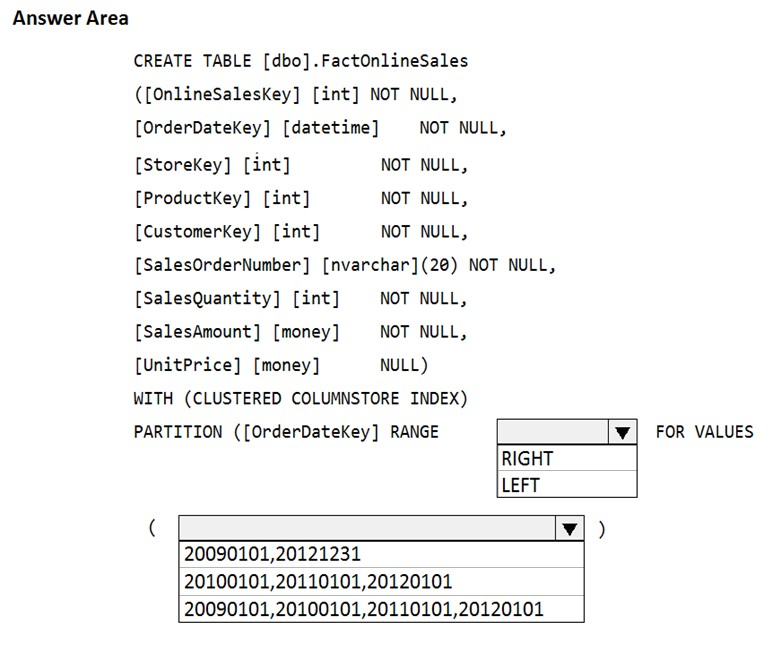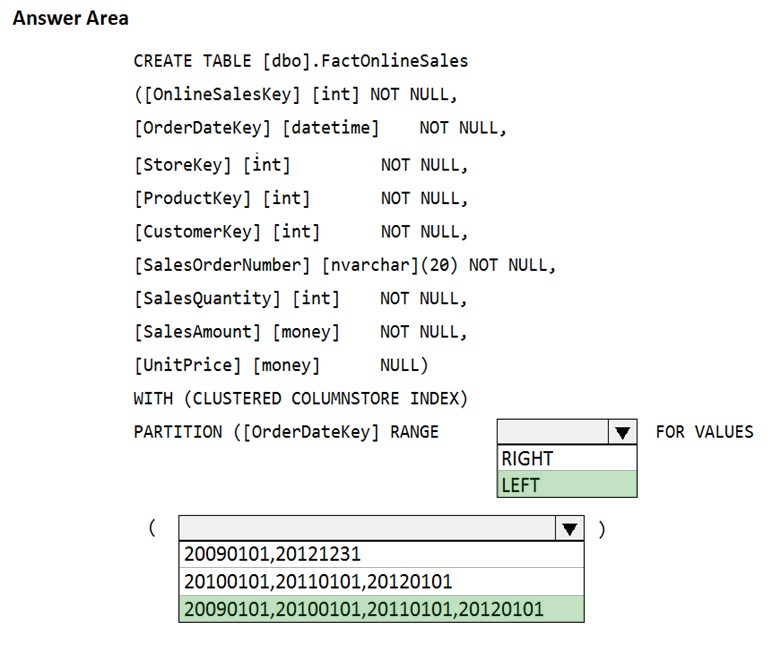

HOTSPOT -
You have an enterprise data warehouse in Azure Synapse Analytics that contains a table named FactOnlineSales. The table contains data from the start of 2009 to the end of 2012.
You need to improve the performance of queries against FactOnlineSales by using table partitions. The solution must meet the following requirements:
✑ Create four partitions based on the order date.
✑ Ensure that each partition contains all the orders placed during a given calendar year.
How should you complete the T-SQL command? To answer, select the appropriate options in the answer area.
NOTE: Each correct selection is worth one point.
Hot Area:

Akesh
Highly Voted 3 years, 8 months agosatyamkishoresingh
3 years, 7 months agomedsimus
3 years, 6 months agoMayankSh
Highly Voted 4 years agomemo43
3 years, 11 months agorajneesharora
3 years, 12 months agoMarcus1612
Most Recent 3 years, 6 months agohoangton
3 years, 10 months agoSteviyke
3 years, 10 months agoAZ20
3 years, 10 months agovrmei
3 years, 11 months agoChiranjib
3 years, 11 months ago111222333
3 years, 11 months agojitu803
3 years, 11 months agoTaekook
3 years, 11 months agomaciejt
3 years, 11 months agobadetoro234
3 years, 11 months agotem1234
3 years, 11 months agoAmy007
3 years, 11 months agoGarnew
3 years, 11 months agoKpKo
3 years, 12 months agomeswapnilspal
3 years, 12 months agocadio30
3 years, 12 months agoNamishBansal
4 years ago